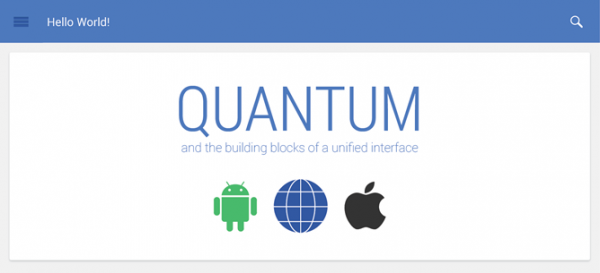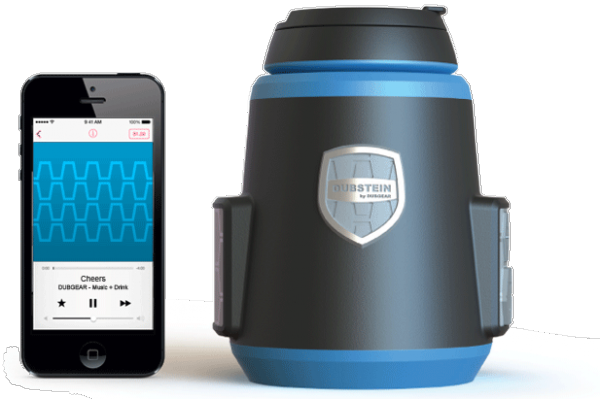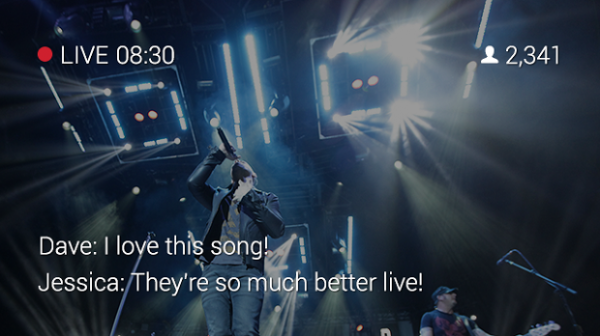Walyou |  |
- Android Design Changes Incoming
- Dubstein Bluetooth Speaker Mug Brings Together Drinks and Wireless Music
- Google Improves Glass with Shazam, Zombies Run, Livestream and Duolingo
| Android Design Changes Incoming Posted: 25 Jun 2014 06:00 AM PDT  Google I/O is right on top of us, so there’s Android changes incoming. New leaked screenshots give a preview of what we’ll see from Google this week. In 2010, Google hired an aspiring young interface designer, Matias Duarte, to be the director of Android’s user experience. At that time, Android was famous for anything but its user interface and design. Starting with Android 3.0, Honeycomb, Matias began revamping the way everyone interacts with their Android smartphones, slowly changing and evolving into the Android 4.4, KitKat, that most high end Android devices today use. With Google I/O happening this week, we are guaranteed to see some changes to the Android system, possibly even an entire version change to to an Android “L,” be it Lollypop, Lemon Bar, Lemonade, or Lorna Doones, although the past few version changes have occurred in the fall with the launch of the new Nexus phone, anything could happen at Google I/O. Several changes to the look and feel of Android have already leaked this year, such as Project Hera, which unifies, or “marries,” parts of Google’s software and services with chromium HTML5 features. At the same time, Google is trying to make Android more attractive to developers. Other than Project Hera, the other major boost the mobile operating system will get comes from the Android Silver program. When Android was young, before Matias Duarte came in, Android’s interface was so lacking that many manufacturers developed proprietary Android skins, which is the origin of the Android variants we have today, like Samsung’s TouchWiz, HTC’s Sense, Motorola had Moto Blur before opting for a more pure version of Android in the newer models since the Moto X came out. Android Silver is rumored to be a component of Google’s efforts to establish more concrete design standards to unify the user experience across manufacturers. The other components of this are Quantum Paper and Polymer. Polymer serves as a sort of toolkit for developers to assist in easily building responsive interfaces. Several leaked screenshots showing off the modified Android design language in Quantum Paper, built with Polymer. Quantum Paper and Polymer |
| Dubstein Bluetooth Speaker Mug Brings Together Drinks and Wireless Music Posted: 24 Jun 2014 01:54 PM PDT  We all know that when going camping, there are always more things you’d want to bring along than there’s room in the backpack. The Dubstein Bluetooth speaker mug solves part of that problem by combining two bulky items into one. Toronto-based Jansen White came to realize that it wouldn’t be a bad thing if mugs had speakers built into them. With that thought in mind, he proceeded to founding Dubgear two years ago. About 20 prototypes In an interview with Gizmag, lead designer Jonathan Loudon stated that “The speaker does get loud, testing around 100 dB, yet the sound is bass/ treble balanced.” In other words, the materials used for building the Dubstein Bluetooth speaker mug are of high quality, as otherwise the sound would’ve been terrible. White added that “The beverage insert is single wall (similar to any coffee holder). The speaker base unit is double walled. So if you use the beverage container, then you get triple wall insulation. If you remove the beverage insert, and insert a bottle or tallboy (like a koozie), then you get double wall insulation.” The body of the Dubstein speaker mug should stand some splashes and spills without problems, but it’s not completely waterproof. Dubstein comes with two 3 W, 40 mm full-range neodymium speaker drivers, a Class-D amp and a 24-bit DAC, which is more than enough for a crisp sound. The current version includes some custom electronics, but the retail one will rely on thirt-party components. This measure should help cut down the production costs and eventually, the price people will pay. Dubstein has plenty of controls, and the Bluetooth 4.0 connectivity shouldn’t be that merciless on the battery. The developers claim that the lithium-ion battery should keep the speaker going for around 8 hours. Dubstein by Dubgear is currently featured on Kickstarter, where its creators are trying to raise $75K CAD so that the speaker enters mass-production. At press time, people backed the project with just $5,576 CAD, but there are 28 more days to go, so the campaign is not hopeless. Early birds can secure a Dubstein speaker for themselves by backing the project with $129 CAD. When those spots will be gone, people will have to pledge $149 CAD in order to get a speaker mug. Assuming that the campaign gets funded, delivery should start in November 2014. Be social! Follow Walyou on Facebook and Twitter, and read more related stories about the annoying Dalek that packs the world’s loudest Bluetooth speaker, and the aluminum Braven 850 speaker. |
| Google Improves Glass with Shazam, Zombies Run, Livestream and Duolingo Posted: 24 Jun 2014 01:20 PM PDT  Google decided now would be a great time to bring more apps to its smart glasses, just a day before the I/O conference. The new Glassware is based on big names, so it should make this wearable even more appealing. One of the first new apps that was added to Glass is Duolingo, a piece of software that’s essential to anyone wanting to learn a new language. In a particular case, Duolingo is useful when traveling, but it could turn convenient even if you’re using it with a pen pal from another country. LiveStream is said to be among the most important pieces of new Glassware. Before this official app, anyone who wanted to use LiveStream.com in tandem with Google Glass had to rely on a side-load install. Shazam and MusicXmatch are two apps for music lovers. Want to look up the song that’s currently playing, or do you want to see the lyrics of a particular song? These two will help you find the info you’re looking for faster than when with a smartphone. StarChart is for the ones who are looking #throughlass at the stars. Astronomy lovers who happen to own Google’s wearable will discover a new side of things, as long as they’re leaving the city lights behind. The addition of The Guardian app marks the launch of Google Glass in the UK. Alan Rusbridger, editor-in-chief for Guardian News & Media, stated: “What intrigues us most about Google Glass and other wearable devices are the new journalistic opportunities they provide, and how they allow us to collaborate with our readers around the world while respecting their privacy.” As far as the Zombies! Run app is concerned, its addition to Google Glass was really a must. Fitness apps and wearable tech really go hand in hand, and when it comes to motivating people to stay fit, there aren’t many options better than Zombies! Run. Yet, I think that the Glass version of the app could be improved by using augmented reality. Seeing zombies around the corners of buildings would get people even more motivated, when the audio part just isn’t enough. I’m wondering what Google has in store for us at the I/O conference, given these many new Glass apps. Be social! Follow Walyou on Facebook and Twitter, and read more related stories about the Google Glass integration in the 2015 Hyundai Genesis, and the Google Now bill reminder. |
| You are subscribed to email updates from Walyou To stop receiving these emails, you may unsubscribe now. | Email delivery powered by Google |
| Google Inc., 20 West Kinzie, Chicago IL USA 60610 | |